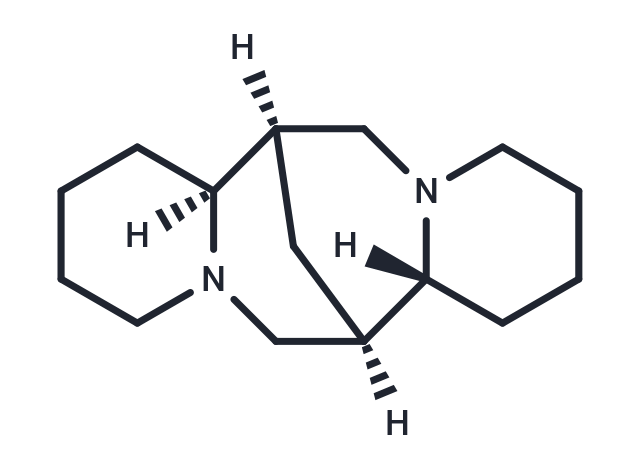Shopping Cart
- Remove All
 Your shopping cart is currently empty
Your shopping cart is currently empty

(+)-Sparteine is a quinoline alkaloid extracted from Scotch broom, a sodium channel blocker and a class 1a antiarrhythmic agent. It competitively inhibits the activity of nicotinic acetylcholine receptors in nerve cells and is a ganglionic blocking agent.

| Pack Size | Price | Availability | Quantity |
|---|---|---|---|
| 100 mg | $42 | In Stock |
| Description | (+)-Sparteine is a quinoline alkaloid extracted from Scotch broom, a sodium channel blocker and a class 1a antiarrhythmic agent. It competitively inhibits the activity of nicotinic acetylcholine receptors in nerve cells and is a ganglionic blocking agent. |
| In vitro | (+)-Sparteine (Pachycarpine) (2 μM) reduces ACh-induced currents caused by activation of nicotinic ACh receptors (AChRs) in a voltage-independent manner at membrane potentials between -50 mV and +30 mV; the ACh dose-response relationship is altered by 2 μM (+)-Sparteine (Pachycarpine) at -50 mV and -90 mV in a manner typical of a competitive but not competitive antagonist. [1] |
| Alias | Pachycarpine |
| Molecular Weight | 234.38 |
| Formula | C15H26N2 |
| Cas No. | 492-08-0 |
| Smiles | [C@]12([C@@]3(N(C[C@@](C1)([C@]4(N(C2)CCCC4)[H])[H])CCCC3)[H])[H] |
| Relative Density. | 1.08g/cm3 |
| Storage | Powder: -20°C for 3 years | In solvent: -80°C for 1 year | Shipping with blue ice. | ||||||||||||||||||||||||||||||
| Solubility Information | DMSO: 5 mg/mL (21.3 mM), Sonication is recommended. H2O: 2.86 mg/mL (12.20 mM), Sonication is recommended. | ||||||||||||||||||||||||||||||
Solution Preparation Table | |||||||||||||||||||||||||||||||
H2O/DMSO
DMSO
| |||||||||||||||||||||||||||||||

Copyright © 2015-2025 TargetMol Chemicals Inc. All Rights Reserved.